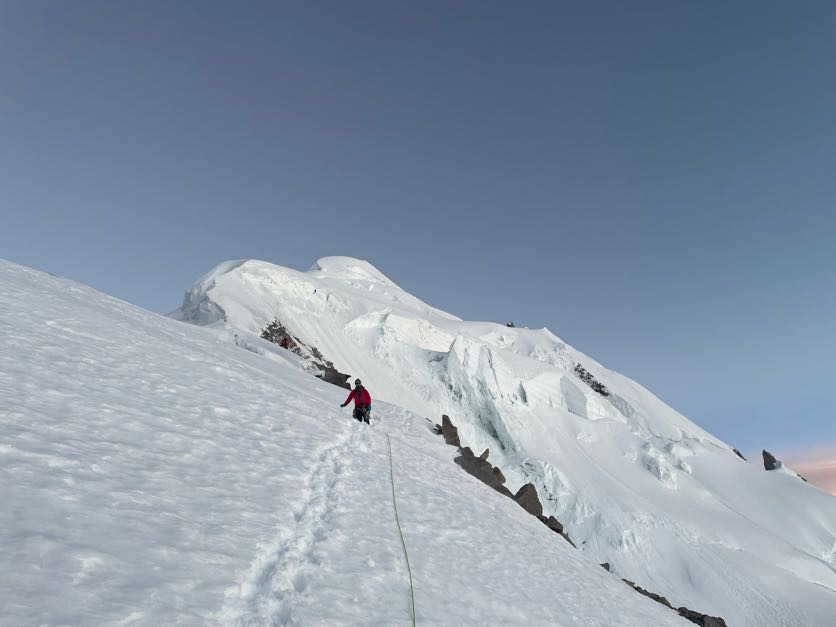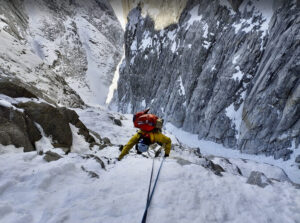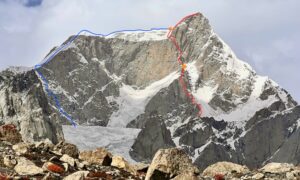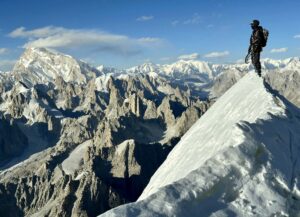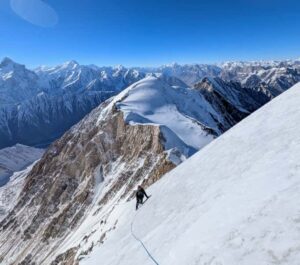Philip de-Beger of the UK, Lorenzo Heis of Switzerland, and Aleksi Mujirishvili of Georgia have just returned to Islamabad after the first ascent of 6,497m Virgerab Sar in the Karakoram. Admittedly, we had never heard of Virgerab Sar, so the first question that comes to mind is, where is it?
“You have to keep going up from Shimshal until the end of the valley,” de-Beger said. “The peak is at the very end of the Virjerab Glacier. It is also approachable from the Sim Gang Glacier by Snow Lake.”
The peak appears on Google Earth below.
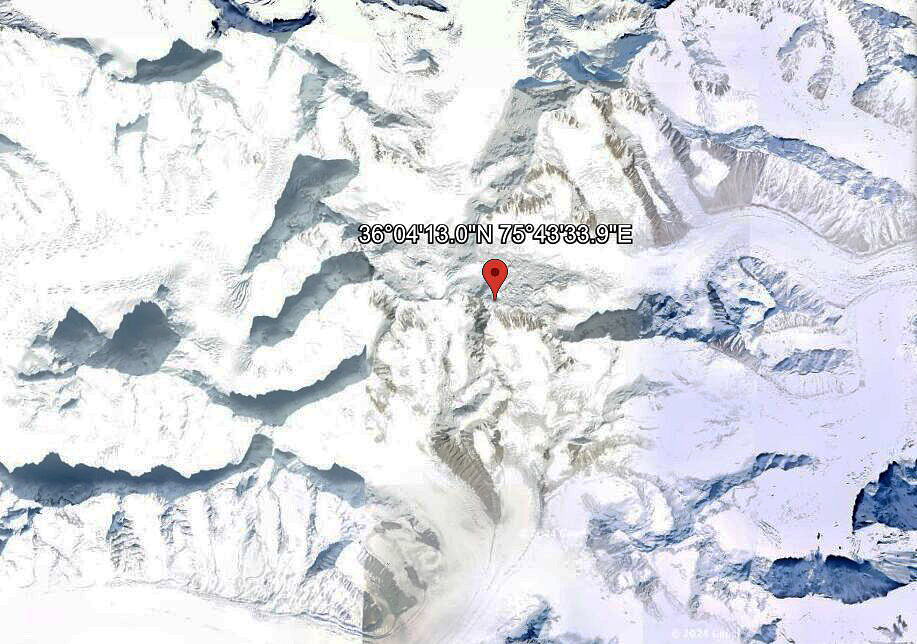
Virjerab Sar on Google Earth.
How to get there – that is the question
De-Beger had previously attempted Virjerab Sar in 2022 as part of an expedition led by regular climbing partner Peter Thompson.
“That expedition started from Askole,” de-Beger recalled. “Unfortunately, the porters ditched us 30km from our peak, citing waist-deep snow. So Murilo Lessa and I carried all our gear, using snowshoes and traveling at night.”
Their efforts were in vain. They reached the Sim Gang Glacier but failed to cross the last snow bridge. Short of supplies and without an alternative route, they retreated.
“At least, we made the first ascent of a peak around 5,920m high on the return journey,” the climber said.
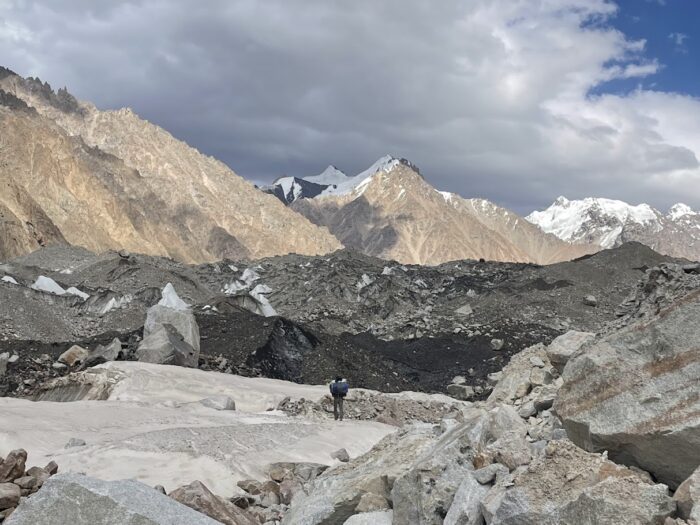
Glacial terrain in the Shimshal Valley. Photo: Philip de-Beger
This time, de-Beger tried a different approach route. He planned to go via the Hispar Glacier and Virjerab Pass, but his local agent in Shimshal persuaded him to head up the Shimshal Valley, a route only done twice by local teams. Not surprisingly, getting there was a major challenge.
“We took four days with porters, then two days with high-altitude porters. From where they left us, it was still a day to our base camp at 5,350m. And it took us two carries to bring everything there.”
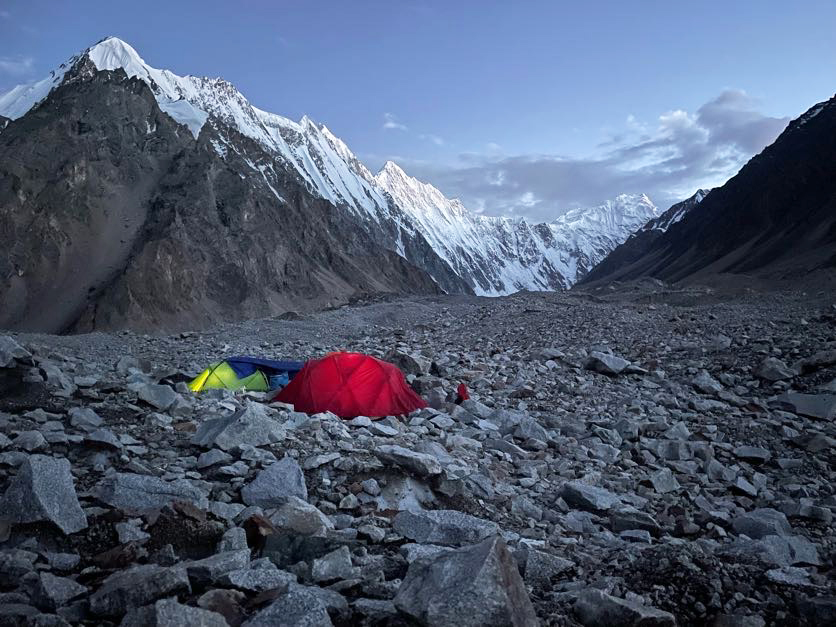
Base camp. Photo. Philip de-Beger
First-time team
This was the first time that De-Beger, Heis, and Mujirishvili climbed as a team.
“Lorenzo [Heis] and I made several first ascents of rock routes in Ethiopia when we were both 19, but we have barely climbed together since,” de-Beger, now 36, noted. “Lekso [Mujirishvili] and I made first ascents of a couple of waterfalls in Georgia.”
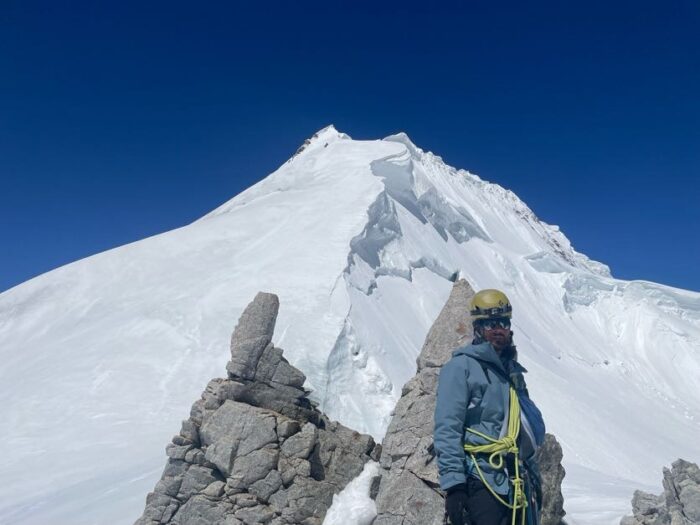
Great climbing weather. Photo: Philip de-Beger
Once they readied their base camp, the climbers started immediately, since weather forecasts gave them just a few good days before a snowy spell. They spent their first bivouac at around 5,900m.
“The route up was relatively straightforward but involved crossing some massive crevasses, which was only possible in the early morning,” de-Beger said. “We made an immediate attempt on the peak but were stopped by too-slushy snow slopes.”
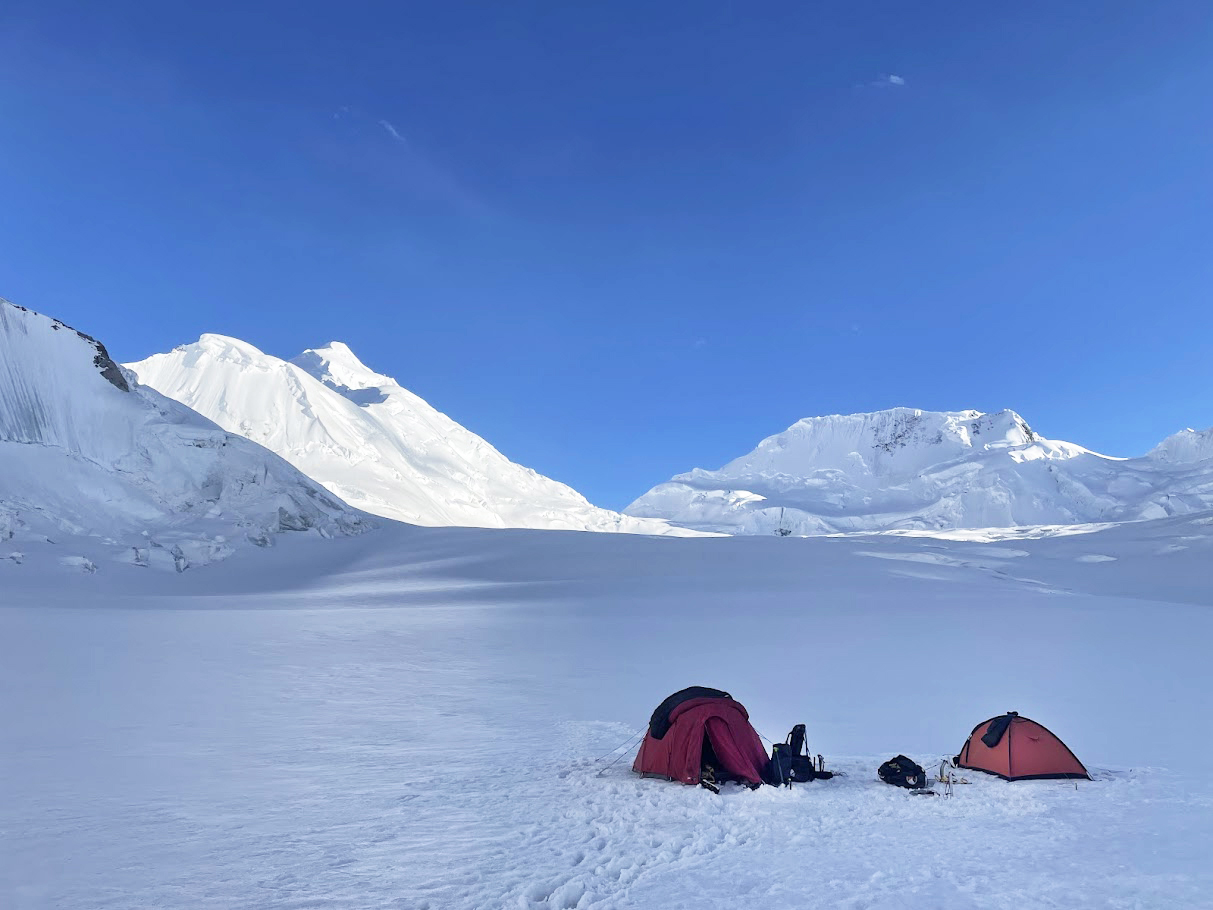
Bivouac. Photo: Philip de-Berg
Second attempt
They waited out bad conditions in base camp for a week, then struck off again during a short break in the weather. The team began early and summited on August 10.
“The line wasn’t too technical, although there was a steep section on the ridge that we didn’t feel we could adequately protect,” de-Beger said. “But we were able to find a way up, anyway.”
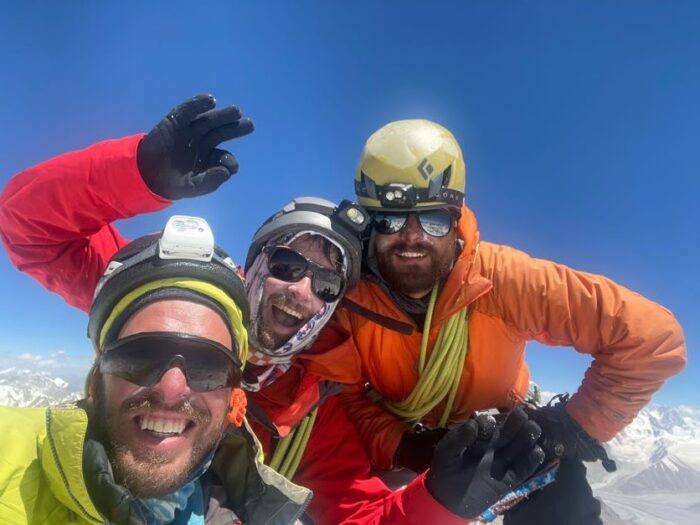
Summit picture. Photo: Philip de-Beger
Initially, the team had planned to go up to a col between Virjerab Sar and the adjacent peak, then climb the ridge to the summit. However, after a reconnaissance trip, they opted for a different approach, across the peak’s north side and then directly to the top. See their line below:
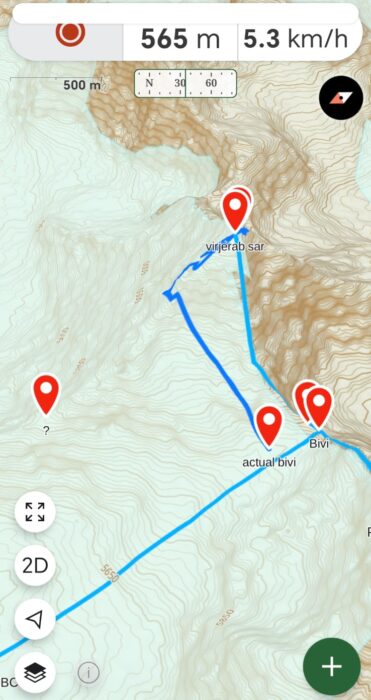
Route planned (light blue) and the actual GPS track (dark blue) of their line on Virjerab Sar.
More to do
De-Beger is happy with the ascent, and although he would have liked to try other nearby peaks, the others felt content with the one summit. Also, they had a long hike ahead of them since they had no porters for the return trip. “Lorenzo [Heis] and I carried each 45kg for three days,” de-Beger said.
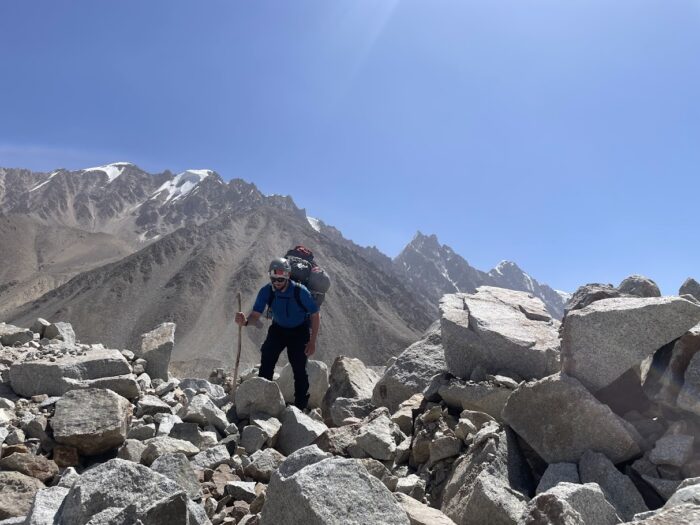
A heavily loaded descent. Photo: Philip de-Beger
They were also isolated during the expedition since de-Beger somehow fried his Thuraya phone by trying to charge it directly from the solar panel. They had an InReach but lost their connection during the final days of the expedition.
Those interested in exploratory climbing in isolated areas of Pakistan have plenty of opportunities at the head of Shimshal Valley, says de-Beger. However, there’s unpredictability and adventure in the approach and the climb itself. Swollen rivers in late summer can create hair-raising crossings even for vehicles, as de-Beger’s team found out.
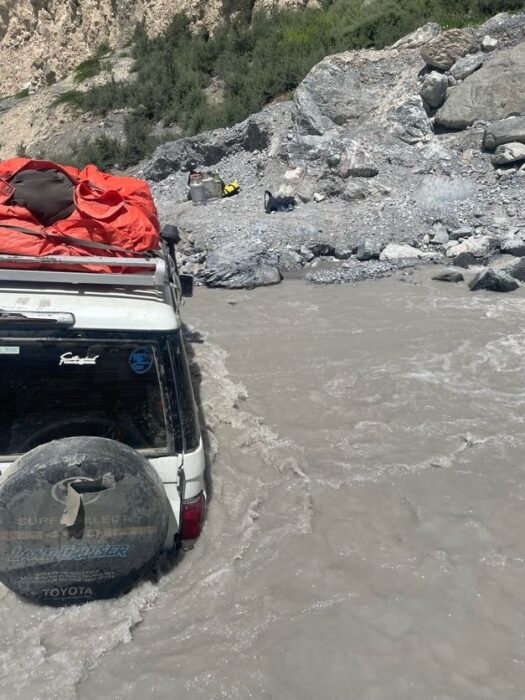
Scary river crossing on the way back to Shimshal. Photo: Philip de-Beger
